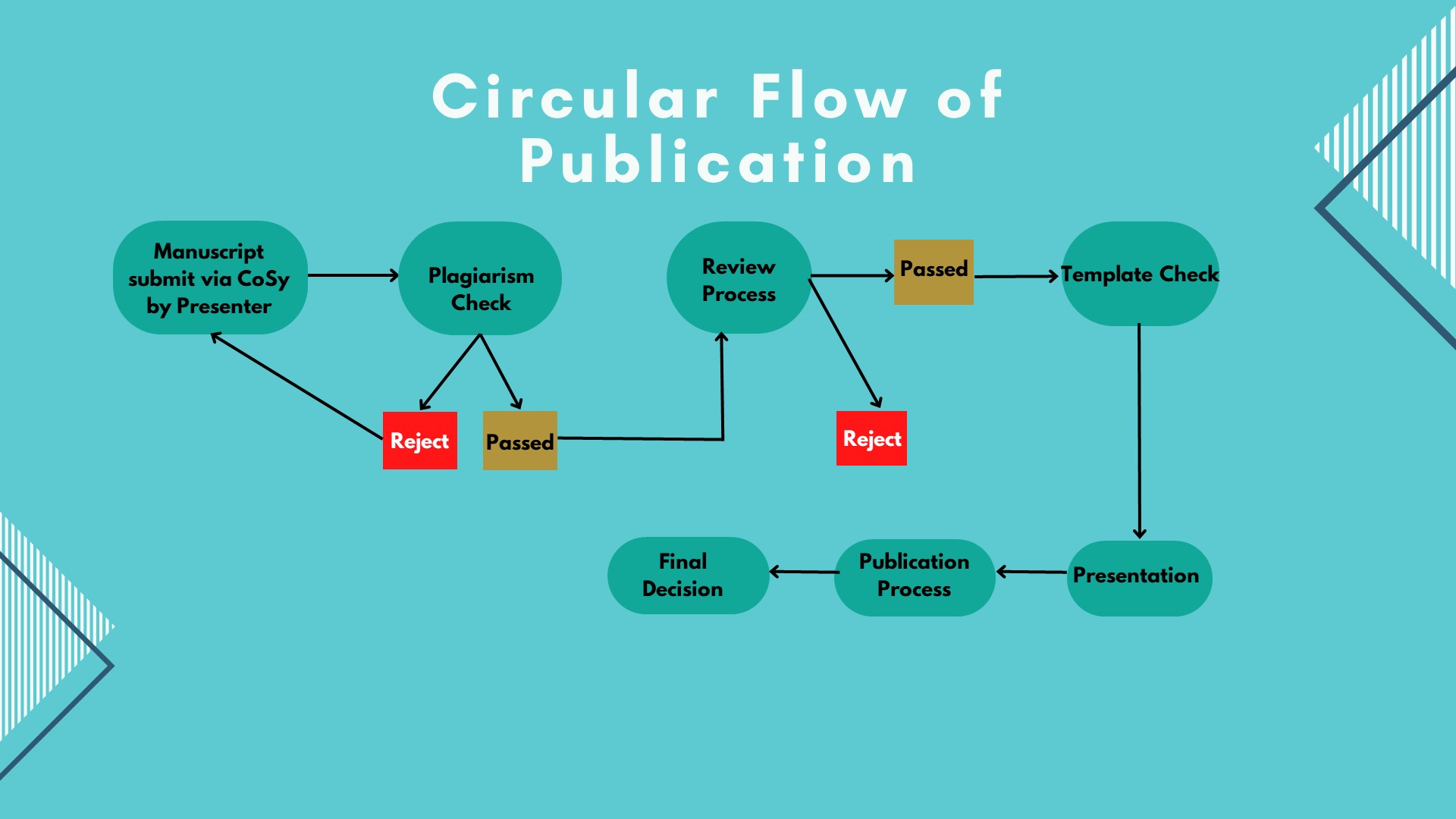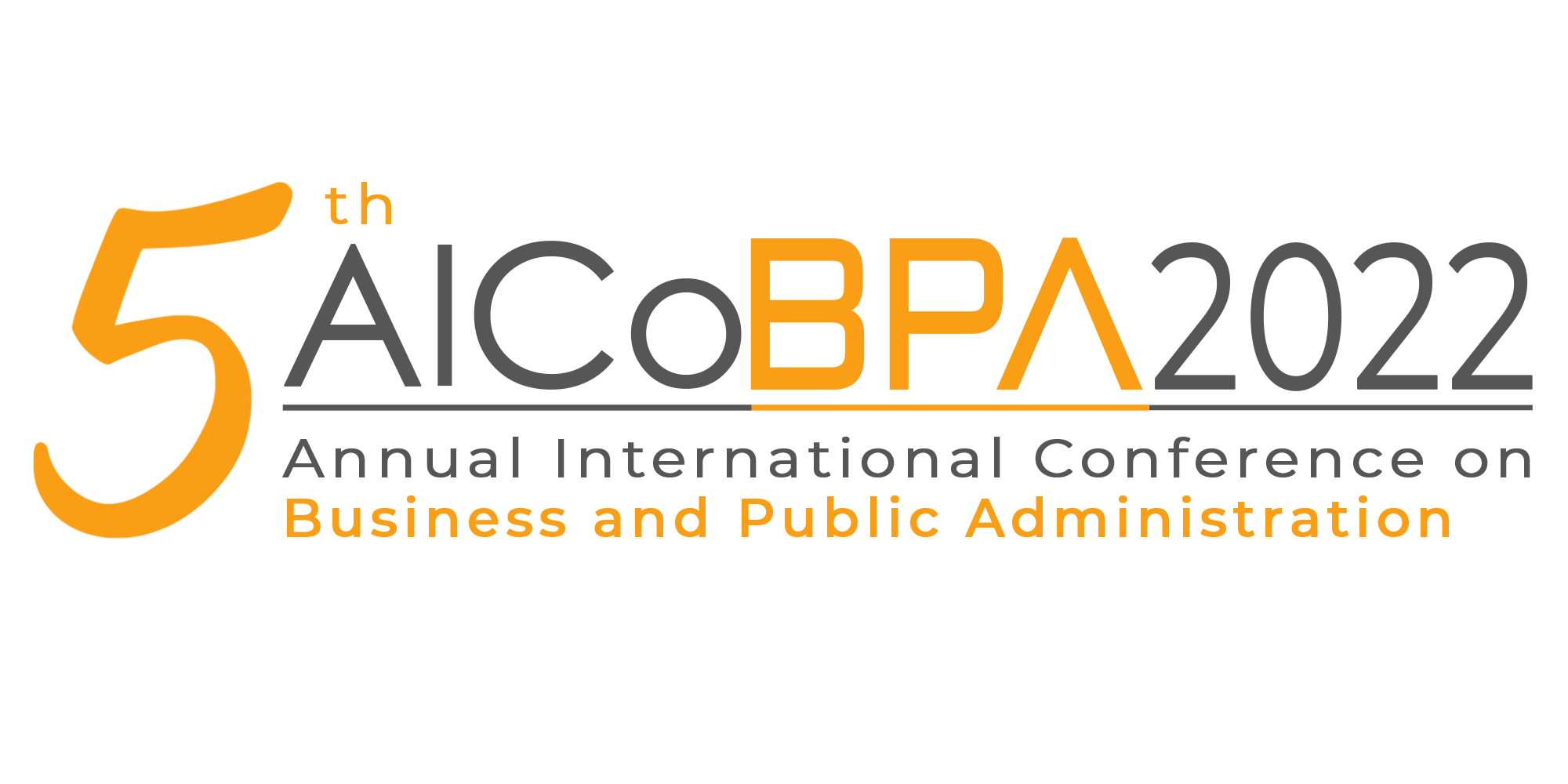General Guidelines

The publication process entails several steps, which are delineated as follows:
- The presenter submits the manuscript through the Cosy system.
- The committee initiates the process of plagiarism detection by utilizing the Turnitin application to verify the originality of the submission.
- Following the fulfillment of the plagiarism criteria, the manuscript proceeds to the review process, where internal and external
- reviewers evaluate the content of the manuscript. Moreover, the paper template is scrutinized for compliance with standard formatting requirements.
- The manuscript is presented during the implementation of the AICOBPA international conference.
- The Atlantis Press publisher oversees the publication process of the accepted manuscript.
- The final decision regarding the publication of the manuscript is made after considering the input from the review process and editorial board.
It is essential to note that the aforementioned publication process adheres to the academic standards and guidelines, ensuring quality research and publication output.
This conference employs the double-blind review process, therefore prior to submitting your full-papers, please make sure to align with the template that shared.
Papers should be written in Ms. Word format, single-spaced.
The paper should be 6,000 to 8,000 words (including abstract, reference, and tables/figures), and has never been published before or is currently being submitted to another conference or not being considered for publication.
Download link for Paper Template
Research Paper/Literature Review
A research paper is based on empirical research that applies sound academic methodology. It welcomes paper that utilizes the quantitative as well as qualitative methods in its analysis. A research paper has the following sections:
- Abstract: An abstract should be of approximately 200 – 250 words. Provide a brief summary of the research question being addressed, the method, a summary of results and discussion, and conclusions drawn.
- Introduction: A brief introduction will often include a review of the existing literature on the topic studied, and explain the rationale of the author’s study. This section also explains the contribution of this study to the existing academic literature.
- Method: This section outlines the methodology on how to collect the data whether it is quantitative, qualitative, or the combination of both.
- Result: A results section describes the outcomes of the data analysis, including charts and graphs.
- Discussion: In the discussion, the authors will explain their interpretation of their results and theorize on their importance to existing and future research.
- Conclusion: The author should develop the conclusion by briefly restating the research question and the result. The author should also discuss the implications of the research findings.
- References. These are the list of academic articles and books or other primary resources utilize for the article.
No footnotes or endnotes are allowed, and all citations should appear in the text using the author-date system.
Page numbering should be at the bottom center of each page, without any header/footer.
For references, authors are advised to use the APA Style.
Authors are responsible for ensuring the originality of the content of their paper and shall avoid plagiarism at all times. Failure to comply with the guidelines may result in rejection.
Selected papers will be published in the Scopus/Thomson Reuter-indexed proceedings. Please register your full paper here.
Publishing Policy
- Double-Blind Review will be used for reviewing the papers
- The maximum acceptable Similarity Score is 20%
- All authors whose papers are selected to be published in Journals or Publishers must upload their “Consent to Publish Letter” available via the website and ensure that their papers meet the standard format paper imposed by the targeted Journals or Publishers.
Tools
All papers will be checked using TurnItIn and Plagiarism Detector.

